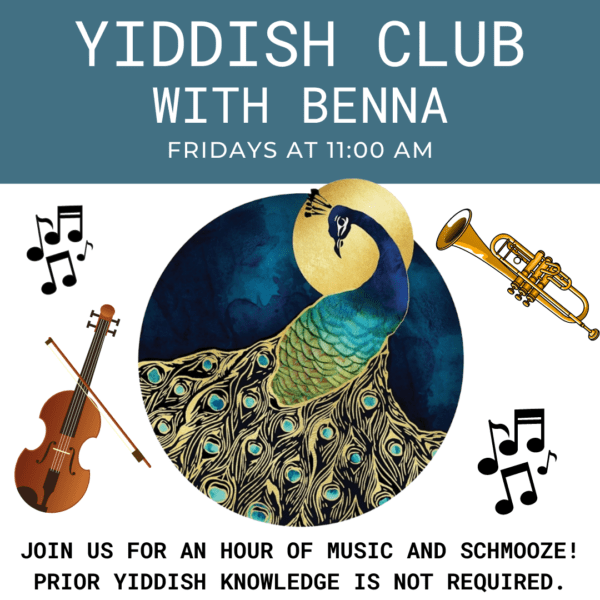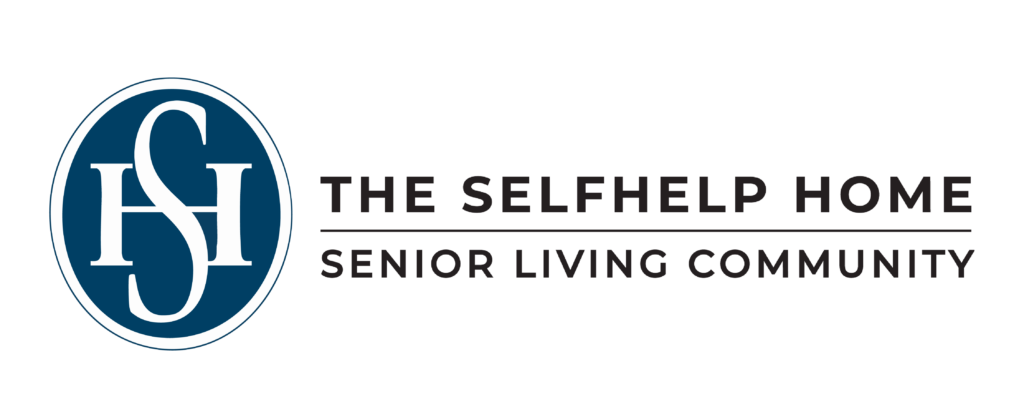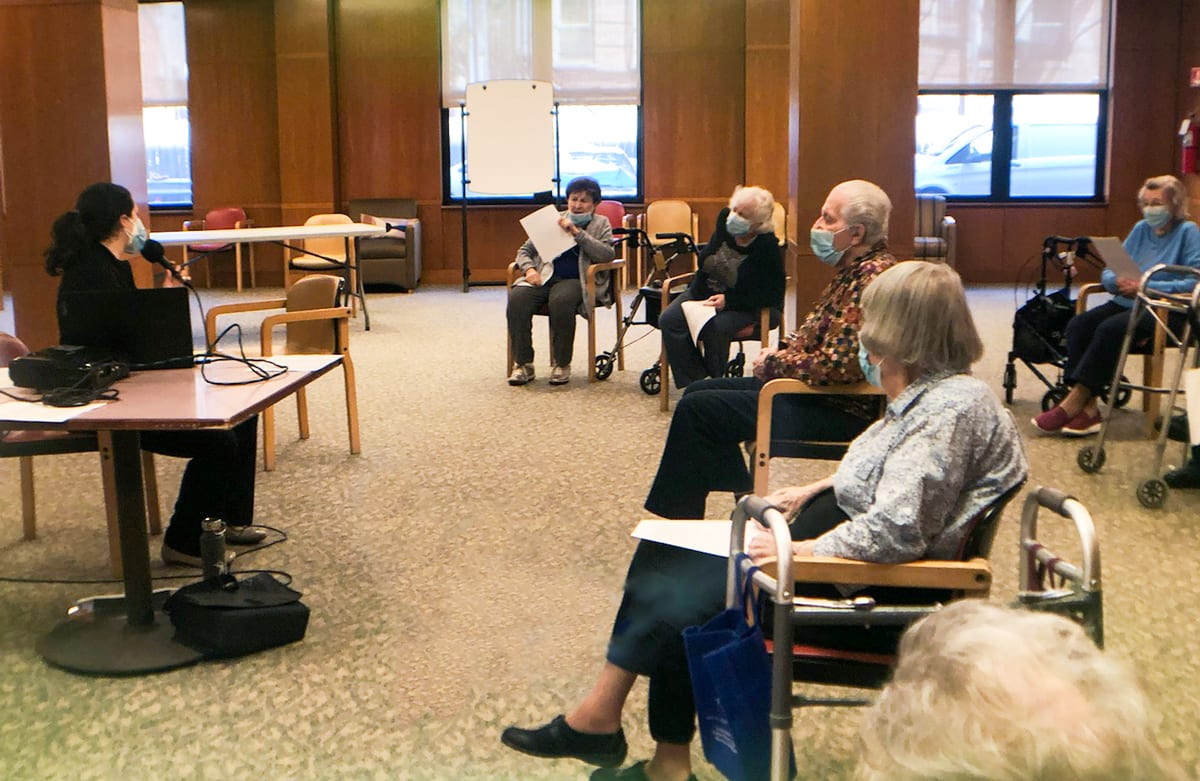By Eve Becker
Yiddish music conveys more than just words, it conveys a vibrant and colorful culture. So when residents of The Selfhelp Home wanted to start Yiddish group, it naturally transitioned into a Yiddish music class.
“It’s not your typical Yiddish group, where there’s a lot of schmoozing in Yiddish,” says Benna Kessler, director of resident engagement at The Selfhelp Home. “People really seem to feel connected to the music, so it morphed into a Yiddish music group. This way anybody can participate, not just people who speak Yiddish.”
Kessler grew up speaking Yiddish at home with her mother, Sheva Zucker, a well-known Yiddish teacher who wrote two widely used Yiddish textbooks. Kessler, who is 33, runs the Selfhelp class and also teaches a Yiddish class at the Chicago YIVO Society and the Chicago Workers Circle.
Each week, the program at The Selfhelp Home, typically attended by 15 to 20 residents, focuses on different themes in Yiddish music, such as Yiddish songs about weddings or Yiddish songs about drinking. Sometimes the class focuses on a particular performer, such as Moishe Oysher, Molly Picon, or Misha Alexandrovich.
It’s often a launchpad for discussion and reminiscences. A recent class focusing on Yiddish songs about food and eating led into a discussion of sweet versus savory gefilte fish and the flavor imparted by leaving the fish skin on. The humorous song “Essen” (“Eat”) sung by Billy Hodes led into a discussion about the bountiful portions of food at Borscht Belt resorts in the Catskills.
During a recent class, Kessler played “Kartofl-Zup mit Shvomen” (“Potato Soup with Mushrooms”), a song where children ask their mother for fine dishes like potato soup with mushrooms. “Have you heard such chutzpah?” the mother says. “There’s not a penny in the house!”
Kessler shares the lyrics of the songs in Yiddish and English, so everyone can follow along. She discusses background about the performers, the songs, and the culture. Now held socially distanced in person in Selfhelp’s social hall, the class took place over Zoom during the pandemic. Kessler was able to share her computer screen, display lyrics of the songs, and play YouTube videos.
“We go through the lyrics, reading it in Yiddish and then in English, and then I play the music,” Kessler says.
“People know a few really famous songs like ‘Afn Pripetchik’ or ‘Tumbalalaika.’ But people are often surprised to learn how many songs there are. There are songs that are funny, there are songs that are sad — just as in any other language. But somehow with Yiddish, things often get minimized to jokes, so I’m enjoying getting to share a broader aspect with people.”
Esther Katz, a resident of The Selfhelp Home, grew up in Brooklyn, New York. The first language she heard at home was Yiddish, and she recalls listening to Yiddish radio every Sunday.
Katz enjoys learning in any form, and she’s appreciated hearing Yiddish music and learning more about it.
“Many of the songs we know, but many of them we do not know. And so this is quite new to some of us, even if you have a Yiddish background,” she says. “It really gives you a historical background. There were a lot of ghetto songs that were created in Russia, resistance songs, a lot of poetry was set to songs, so there is a wealth of material.”
The class builds on the strong musical legacy of The Selfhelp Home, which hosts frequent concerts for residents.
“People here just love music,” Kessler says.
Through music, the program keeps residents connected to the Yiddish language and to each other.



